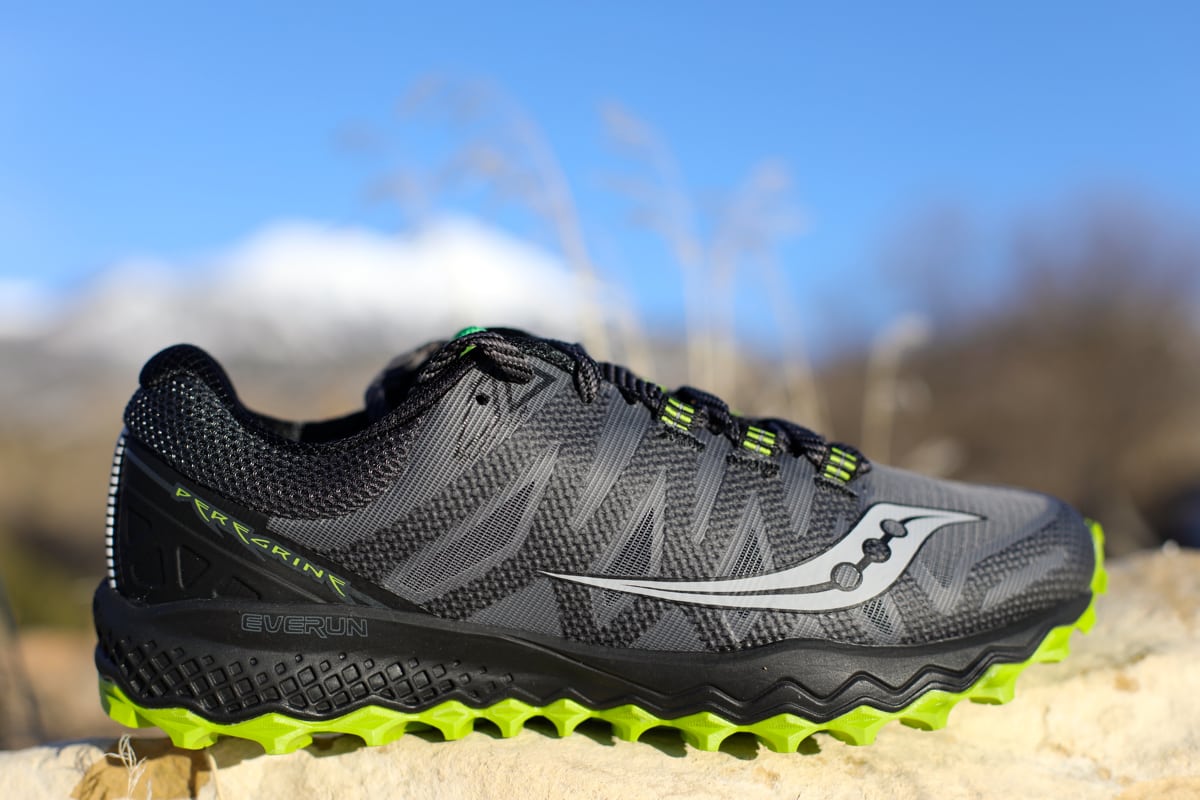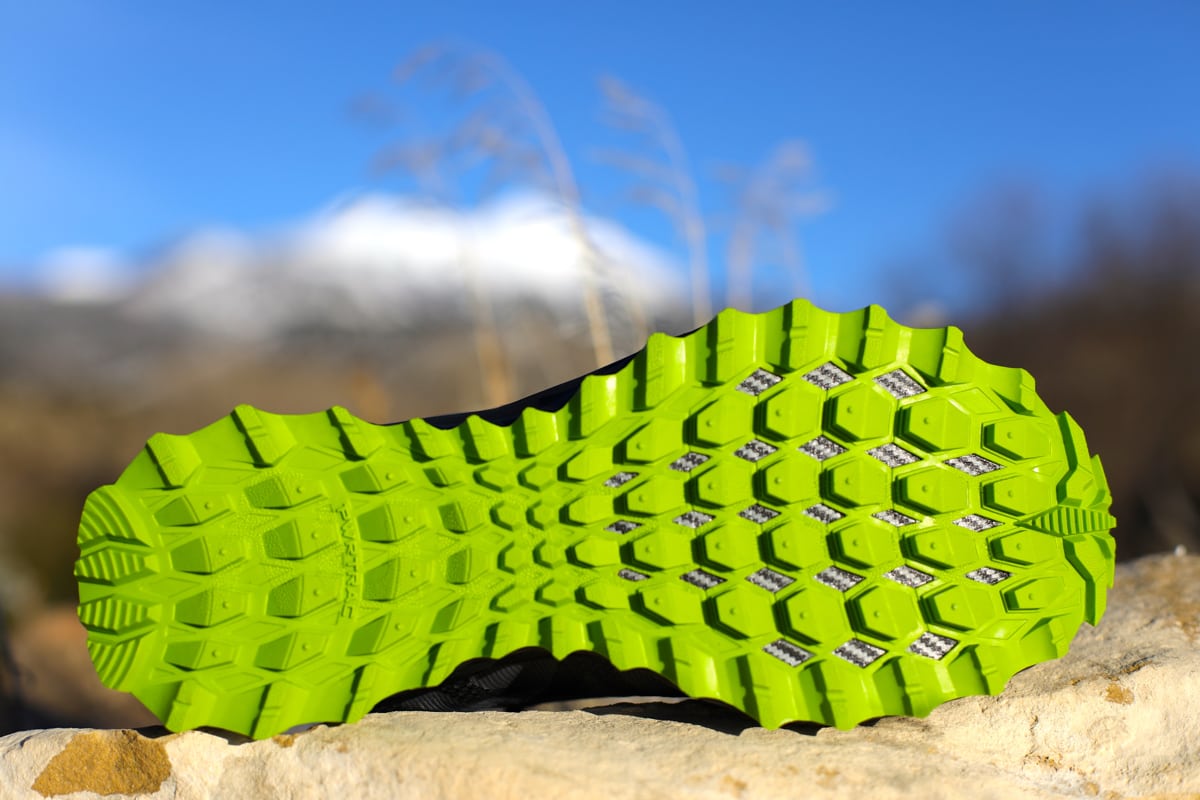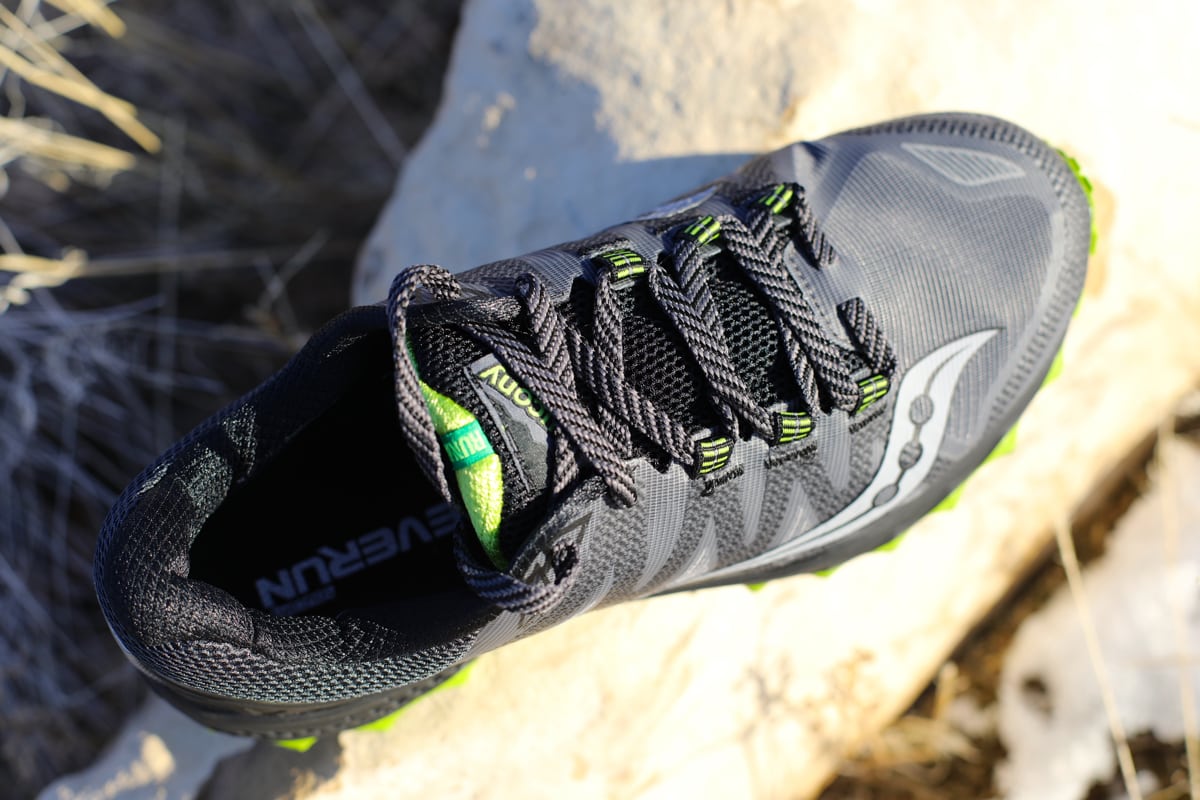For the latest on the Saucony Peregrine, check out our Saucony Peregrine 15 review.
Our Favorite Trail Running Shoes
Check out our Best Trail Running Shoes article to learn about our current favorite trail running shoes!
Saucony Peregrine 7 Review
The 9.4-ounce Saucony Peregrine 7 ($120) is the shoe’s seventh iteration. While the first handful of model years did not stray much from the original design, the past two versions have shown Saucony’s wiliness to continue refining its popular trail running model with updated materials. In fact, this model could almost be touted as a completely different shoe if not for keeping the 4mm drop and the grippy outsole from version 6. This has been my go-to kick in a sloppy, wet year here in the Pacific Northwest and with the exception of a few minor gripes, they have performed even better than expected.
[Click here if you can’t see the video above.]
Saucony Peregrine 7 Review Transcript
So what we’re looking at today is the Saucony Peregrine 7. As the name states, this is the seventh iteration of this shoe. It clocks in at 9.4 ounces (men’s), and in women’s it is 8.4 ounces. Both models share the same heel-to-toe drop which is 4mm with a stack height of 21.5mm in the heel and 17.5mm in the forefoot. With that said, let’s get up close and personal and see what’s new and how these things are holding up.
Saucony Peregrine 7 Upper
Let’s start by walking through the upper. One of the biggest differences in version 6 versus the 7 is that the 7 has an exoskeleton on it. Last year’s model and all previous models of Peregrines had a lot more mesh and stitching that existed to hold the upper together. This year, we have these TPU overlays. You sort of see them throughout—these crossing patterns that anchor to the laces—basically cutting down on stitching. When you feel the inside of the shoe, there’s no stitching in there, so reducing hotspots. It also creates a more precise feel over other versions. Then the other way they work the dissipating heat, because you do have plastic effectively running along the sides of the shoe, is all the way throughout you’ll see these little windowed mesh areas where there’s not an exoskeleton. Then, of course, in the toe area where it’s very much exposed, there’s no TPU here. This area is all just mesh. So it’s a nice update on that front. It definitely gives it a more secure fit.
When we roll around to the heel, one of the previous complaints from the last version was the really rigid heel cup. I know myself and other runners I talked to experienced the same thing, so a couple things have been done here. One is they’ve lowered the height of how high up that heel cup sits. You can see that by the flexibility here—it’s not going up quite as high. The second part is that it’s just more padded. It’s still a rigid heel cup. It still has that good lock-in feel, but I didn’t feel that I had to deal with the break-in and those sort of things that existed in the previous versions. This is definitely welcomed on that front and something I noticed immediately the first time I put them on my feet.
When we roll around to the laces here, previous versions had standard eyelets like what we have up here on the top two. These went to sort of this loop enclosure. You’ll also notice the removal of the gaiter hook which existed in previous models as well. Kind of all the way throughout, there have been pretty decent changes that have existed all the way throughout this shoe as it relates to previous versions all the way up to the 6.
When we look at the tongue, effectively we are looking at from roughly the top three eyelets are not gusseted, and everything below that is. The tongue is connected with some spandex in here. It’s going to be tough to see on camera, but basically it keeps debris out from here down.
Toebox-wise, I feel this is a wider toe box than what we had in previous versions. I don’t feel like my pinky toe was quite as crammed up in these—so, a little more foot splay allowed in this version. I have what I would consider a mostly wide forefoot. This is definitely a welcome addition there. Then more of this exoskeleton TPU mask—this is not a hard toebox like we see in some trail running shoes that have a lot of stuff built up here. You definitely have the sole that wraps around the apex and gives you a good bumper, but it’s really not something that I’ve noticed too awful bad. That might just be because of the shape of the shoe. In general, if you’re someone who stubs your toes a lot, especially on the outsides, there’s not a ton of protection here. I feel like it’s definitely adequate.
One of the other updates here that is interesting in my opinion is the addition of the EVERUN sole. If you look in there, it looks like styrofoam. Altra has a compound similar to this. Adidas has a compound similar to this. It’s this… lots of kind of various densities of little foams that are very bouncy feeling. It is noticeable to me especially when you’re on harder surfaces. This shoe seems a lot more responsive than the previous versions. It actually feels like a really good, responsive trail shoe. Not that the previous version wasn’t, but there’s definitely a feel here of added bounce that wasn’t there before. While I’m on it, on the insole, we can see the insole here is fairly standard. It’s pretty thin and tends to roll up when it’s wet which is something I definitely would like to see updated, but you can always glue those down if that’s a major problem.
Saucony Peregrine 7 Midsole
If we move our way over to the midsole here, we talked about the EVERUN running the length of the shoe, and on the outside here, we’ve got a single compound foam really all the way around. This is soft-ish, so it’s not a very dense form, but it’s also not a very soft foam. I would definitely say it’s right in the middle in terms of squishiness. You’re going to have some ground feel, but you have enough cushion underneath you that it doesn’t feel jarring. Roads and harder surfaces don’t feel like you take a beating. This shoe feels just about right in terms of what the midsole offers.
Saucony Peregrine 7 Outsole
Then as we move our way down to the outsole, if you’re familiar with the last version of the Peregrines, then this is going to look exactly the same. We have the same rock plate that is sitting here in the forefoot that is exposed. You can kind of see that little carbon-fiber-looking holes here in between and then what’s called the PWRTRAC outsole. This is to me a really great outsole. The Pacific Northwest has been just a mess this year in terms of weather, and I’ve always had a ton of confidence in wearing these in just about every condition except for the slickest of ice. In those cases you’re going to need something really specific like ice spikes or potentially maybe one of Saucony’s ice-blend-specific outsoles that they actually have on their winterized version of the Peregrine. These things are, I feel like, spot-on. I always have a ton of confidence in these with uphill-facing lugs, downhill-facing lugs, your brakes, and just a really luggy, toothy outsole that definitely adds a ton of confidence.
Overall Impressions
With all that in mind, let’s flip around and talk about final impressions. To wrap it up, the seventh version of this shoe is definitely, in my opinion, the best to date. The upper, the new exoskeleton, is a much more secure fit. You’ve got a little more room in the toebox. The EVERUN midsole feels a lot better than what we’ve dealt with in the past. They kept the same traction as last year.
The downsides are going to be that I’m definitely seeing some wear and tear on these. We’ve had a rough winter here in the Pacific Northwest with lots of rain, lots of snow, and lots of sludge. There’s definitely some wear showing on these things after 150 miles. There are a little bit of these pinch points here and possibly some of the shoe kind of delaminating from the upper. How far that’s going to go—I can’t say at this point. Overall, given all I’ve put these things through and the terrain they’ve been in, I’d say they’re probably on average with about everything else. Then the last thing I think that is the most problematic of every Peregrine that I’ve ever worn is the insole slides every time it gets wet. Obviously, you can glue that down to help with that, but that is one thing that plagues these shoes. It’s one thing I’d love to see an update on.
With that said, questions or comments, leave those below this video. Thanks for watching. We’ll catch you next time.
Call for Comments (from Meghan)
- Have you run in the Saucony Peregrine 7? What is your impression of this model?
- For those who’ve run in previous Peregrine models, how do you compare this version to them?
[Editor’s Note: If you’re affiliated (i.e., an employee, ambassador, etc.) with a shoe brand, please share your relation in each of your comments on this article. Thanks!]





